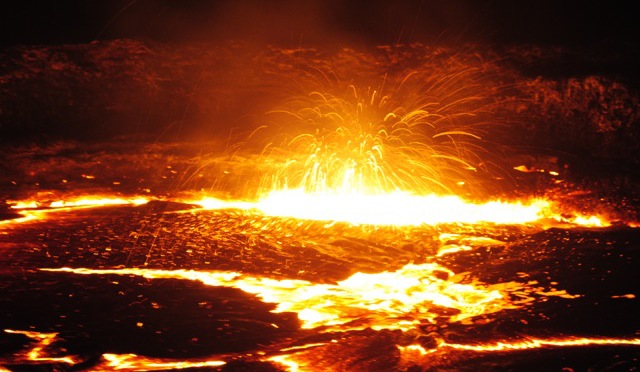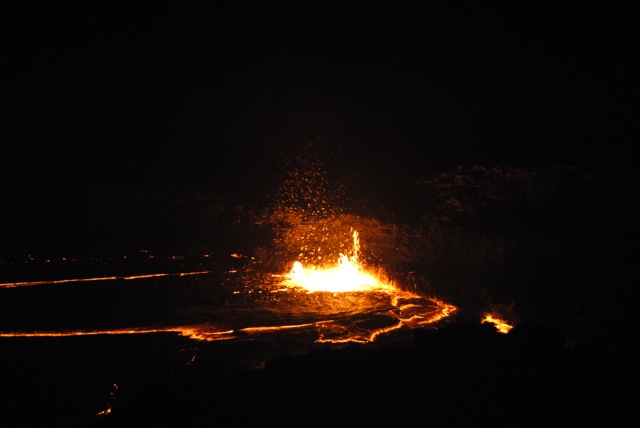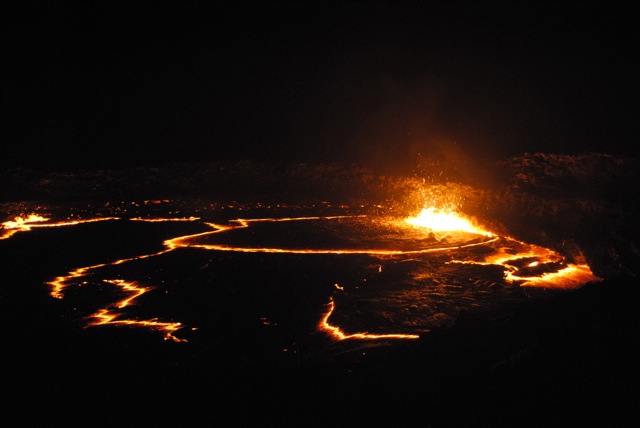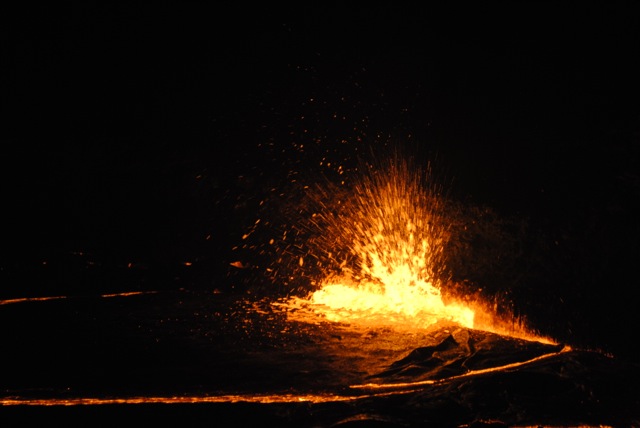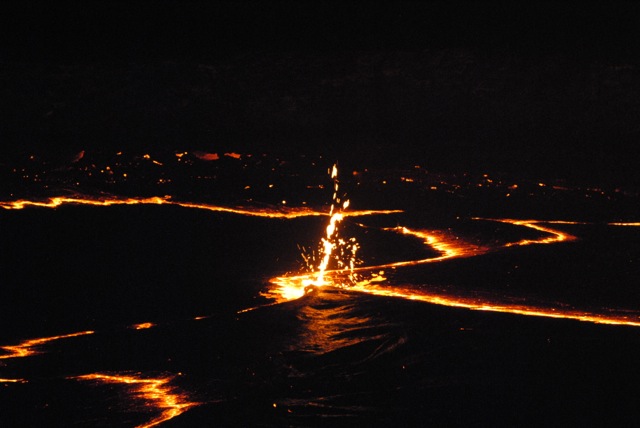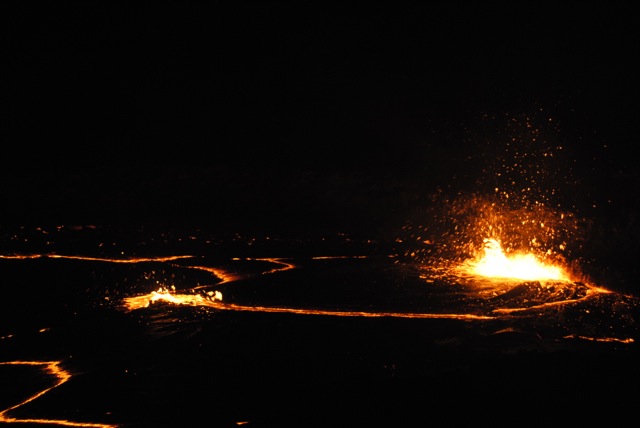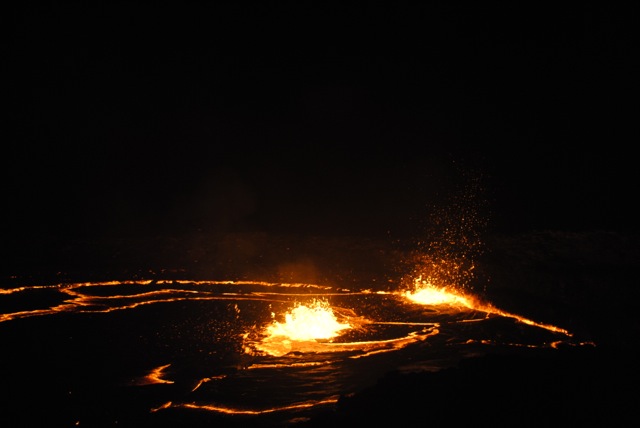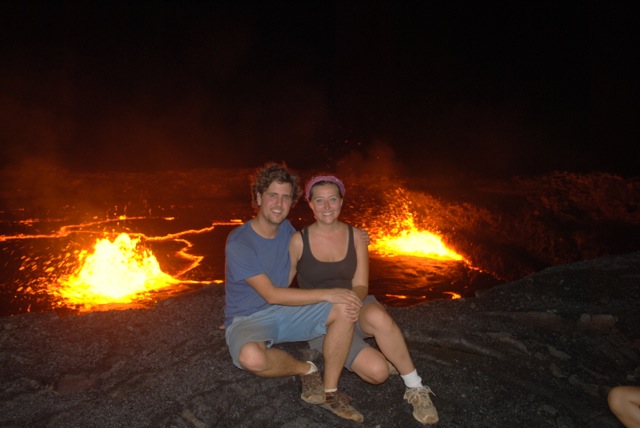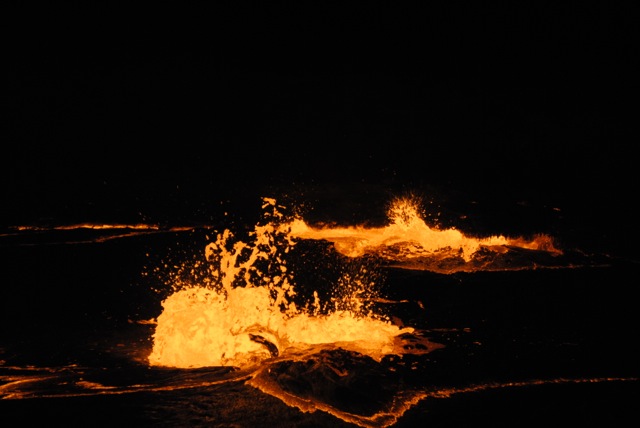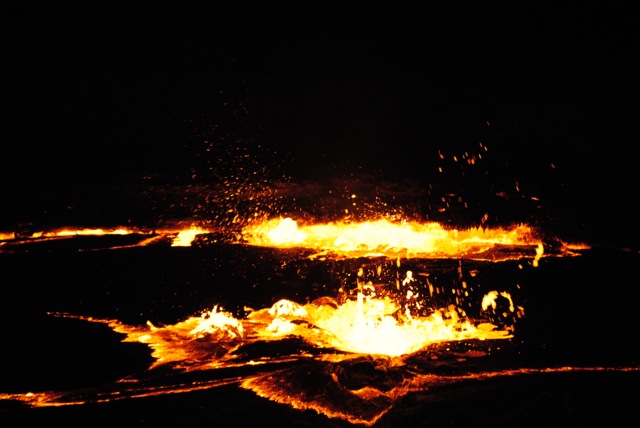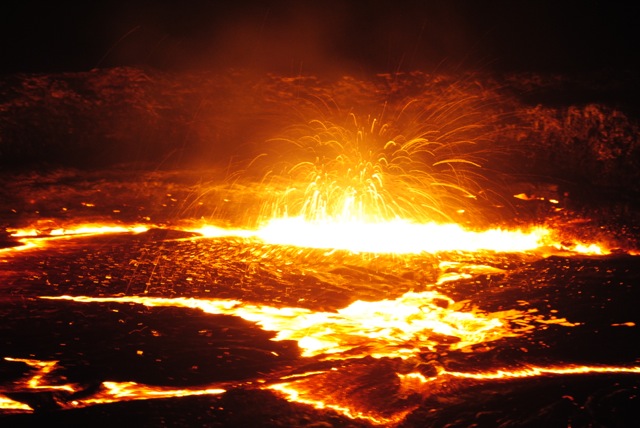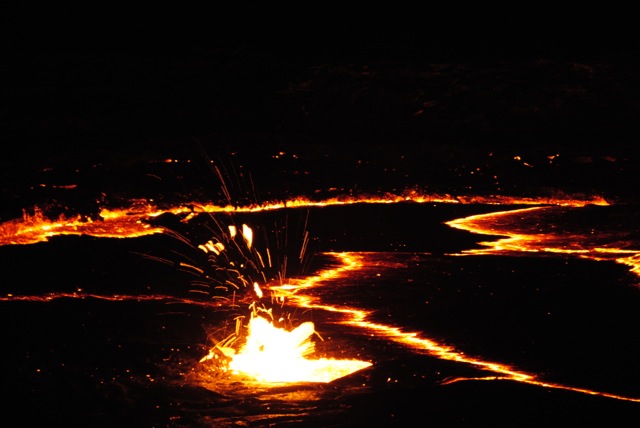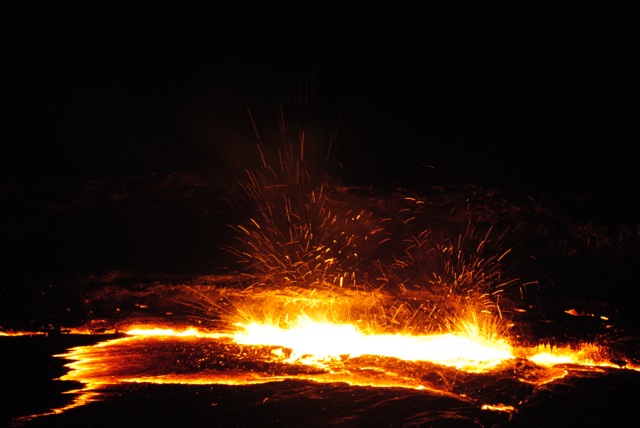After spending a couple of rainy weeks up in the high-elevation of Ethiopia’s mountains, how could we pass up an opportunity to balance out our travels around the region with a trip to the Danakil Depression, one of the hottest (and lowest) places on Earth! Sounds fun, right? Well, Marc thought it did; I took some convincing.
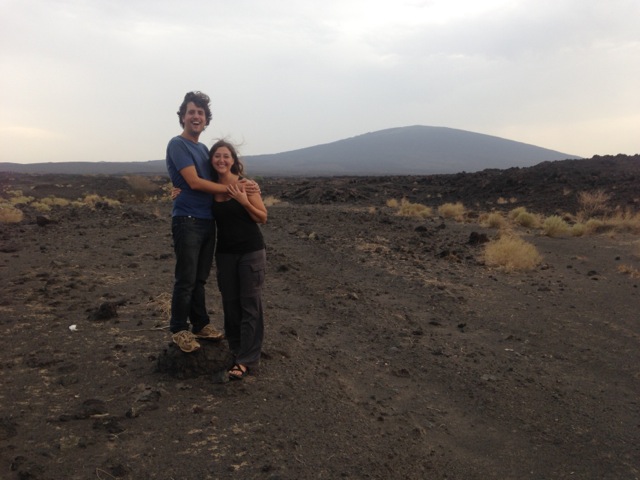
With an average annual temperature that hovers around a staggering 34.4°C/94°F, the Danakil Depression ranks as the hottest place on Earth, on a year-round basis.1 Unfortunately, because of the inhospitable nature of the environment (daytime temperatures regularly exceed 50°C/122°F), as well its proximity to the volatile Eritrean border, the Danakil is not an area which you can explore independently. As such, visits to the area are best arranged with an organized tour. We signed up for a four-day trip with Ethio Travel and Tours, which not only quoted us the best price for visiting the Danakil, but also gave us a discount since there would be four of us (Marc and I, plus our two Kiwi friends that we met in Tanzania) traveling together.
The tour took off from Mekele, which despite sitting less than 300 kilometers northeast of Lalibela, was over 10 hours away by road. The public transportation options between Lalibela and Mekele are few and inconvenient (necessitating a very early morning departure from Lalibela with the strong likelihood of then having to overnight in the crossroads town of Weldiya before continuing on the next day to Mekele), so we treated ourselves and arranged a private door-to-door transfer in a Land Cruiser from our hotel in Lalibela to our hotel in Mekele. The private transfer, however, did not go at all as planned: instead of being driven straight to Mekele, we were first picked up in Lalibela by a local minibus driver, who then drove us – along with another passenger he picked up along the way – to the main highway junction two hours from Lalibela, whereupon we waited for two hours (trapped in the minibus because of the pouring rain) for our driver in the Land Cruiser to meet us and then take us the rest of the way to Mekele. It was so far from what we had bargained for, in fact, that we were ultimately given the transfer for free.
Because of the delays in our transfer, we arrived in Mekele several hours later than expected – but our friends, whom we were delighted to see again, had already ordered us dinner, and we enjoyed an evening visiting with them.
As we stepped into our room after dinner, I heard a slight rustling noise. “I think something is in the bed,” I told Marc. Marc, being braver than I am, looked under the bed and pulled the pillows off the bed … revealing an impressively fat rat.
I hurried to the front desk to inform the attendant we needed a new room, but quickly discovered that his English didn’t include the phrase “there’s a rat in our bed.” He clearly didn’t understand what I was telling him, but suggested he come to the room to “see.”
In the room, he began showing us how to operate the water heater and open the blinds, all while we were trying to explain that our problem was a rat in our bed. We were getting nowhere until I drew him a picture of a rat.
To his credit, he then jumped and raced to get us another (thankfully rat-free) room.
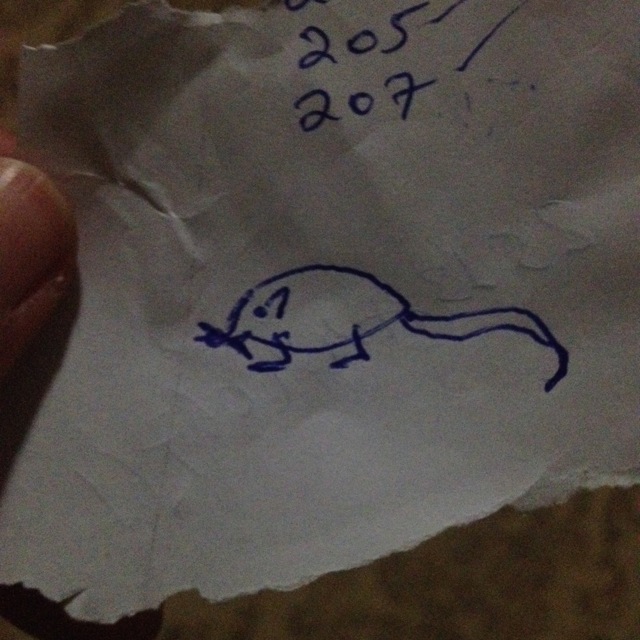
In the morning, we met the rest of our group (there were sixteen of us in total), loaded up our gear (which included all of our food for the next several days along with hundreds of liters of drinking water) and climbed into a series of Land Rovers to begin our tour. Our morning drive included a couple of stops at towns along the way to obtain various permits and pick up our local security, as well as one stop for lunch (and a dust storm).
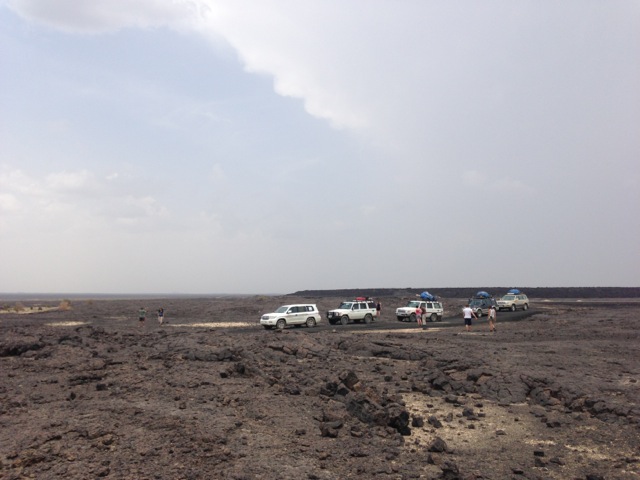
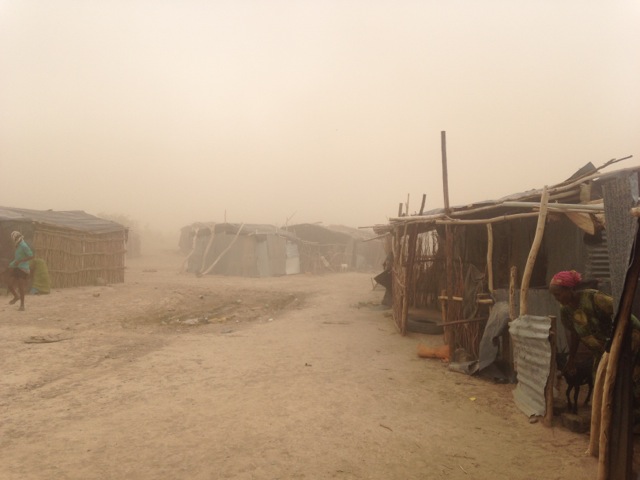
After lunch, we continued to our destination: Erta Ale, a shield volcano that has one of the world’s only permanent lava lakes. We arrived at the base camp, approximately nine kilometers from the volcano’s rim, in the late afternoon, where we rested in the shelters. We needed our energy: we had a long, tough hike ahead of us.
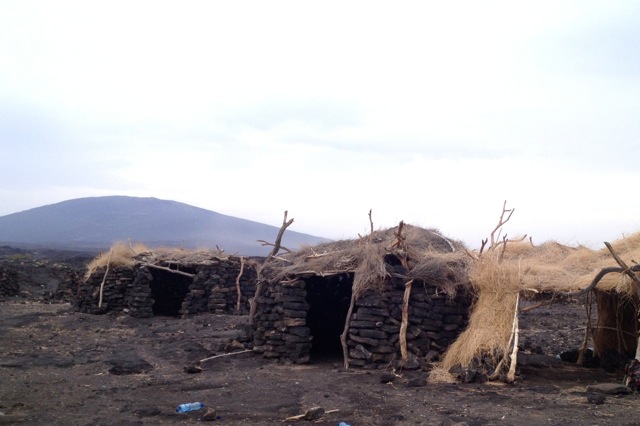
After dinner, we set out for our hike around 8:00 p.m. Even though it was dark, it was still extremely hot outside – a salient reminder of why we couldn’t make the hike during the daylight hours. We armed ourselves with headlamps and torches, which helped illuminate the dark, volcanic rock, but we still needed to pay close attention to where we were walking, lest we twist our ankles. Camels accompanied us, carrying the mats on which we would sleep.
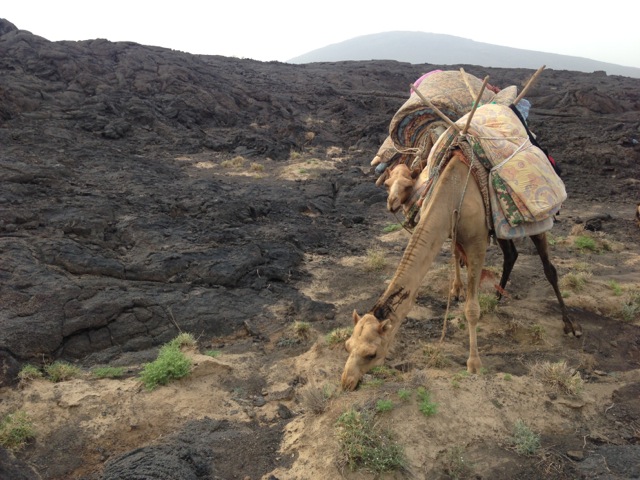
It was a long, tiring trek, and there were more than a few times that I wondered exactly what I had gotten myself into. As we drew closer, however, we could see the top of the volcano glowing in the distance, urging us on.
It was close to midnight when we finally reached our camp at the volcano’s rim. We pressed on, crossing the final 400 meters or so to the lava lake located in the middle of the volcano’s crater. It was unlike anything that we had ever seen. In 2008, we climbed Pacaya, an active volcano near Antigua, Guatemala, where we saw lava slowly crawling down the side of the volcano, but this was something else entirely. It was incredible to watch the lava roil and spew from Erta Ale’s volcanic lake (if you only have time to view one video, watch this one).
We remained there, captivated, for almost an hour before we retreated to our camp on the rim of the volcano. After our sleeping mats had been arranged on the ground, we slept under the stars for four hours before we were awakened to begin our pre-dawn hike down to the base camp, hoping to make it back before the sun and heat became unbearable.
Where We Stayed:
☆ Atse Yohannes Hotel. No goats. There was a rat in our first room, our second room lacked a working toilet, and breakfast was weird and no good.
1 For reference, the average annual temperature in Marathon, Florida – the hottest location in the United States by such metric – is only 25.8°C/78.5°F.

